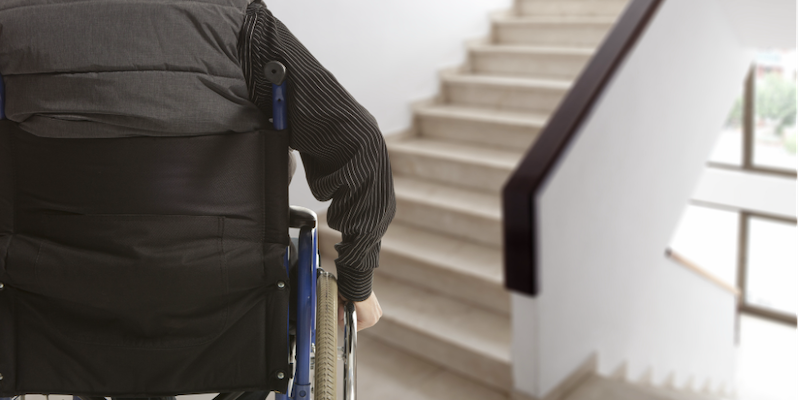Medical researchers confirm that there are about 2.7 million wheelchair users in the US. With a population that high, you would expect most Roanoke facilities to have a wheelchair ramp. However, the reality is that not all buildings cater to the physically challenged.
You will have to move around with a portable wheelchair ramp or install a permanent ramp in your home. However, many factors contribute to the functionality and portability of the ramp.
Specifications of Your Wheelchair
When buying the best wheelchair ramp, you must first consider the features of your wheelchair. Otherwise, you might choose a ramp that is too small or fragile to handle your mobility device.
It is advisable to take down the specific length measurements of the mobility device. It is okay if you do not know how to take accurate measurements yourself. You can always find them on the manufacturer’s site.
By doing so, you’ll have a better idea of the wheelchair you will want to buy.
Material of the Ramp
When buying a wheelchair ramp, most buyers are overwhelmed by the wide range of materials. The material of the ramp will dictate its portability and functionality.
If you are going to move the ramp a lot, pick a light material like aluminum. Yet, most homeowners might neglect metal choices because of their industrial look. These buyers can opt for powder-coated ramps.
Aluminum ramps are one of the best choices. They are easy to install and don’t require much maintenance over the long term.
Otherwise, heavier options like the wooden ramps offer more stability. But they take longer to construct. They also demand much maintenance to avoid wood rot, splintering, or warping.
Steel ramps also offer more stability but are prone to rust. Besides, they are more difficult to relocate. Some people prefer rubber ramps because you can easily trim them for a custom fit.
Location of the Ramp
If you are looking to fix a ramp in your home, you must think about the exact location you are going to place it. Most ramps are designed to withstand extreme weather conditions.
However, some environmental factors might catalyze tear and wear. For an area that is prone to high humid conditions, you might consider getting a ramp with a non-corrosive material.
Besides, if you are going to fix the ramp somewhere over small steps, opt for a threshold ramp. Larger ramps are better for high-rise buildings or commercial environments.
Take note of any other features that might interfere with the installation of the ramp. It might be an awkward door or a curved sidewalk.
In most cases, steps lead to a doorway. Therefore, ensure that the ramp has a flattened side rail to avoid interfering with the motion of the door.
Portability of the Ramp
Chances are that you will be moving around with your ramp a lot. Consider buying a foldable ramp. Those that fold into quarters usually come with handles and are the best option.
If you are looking for a more durable yet portable solution, opt for modular wheelchair ramps. They are much better than the lighter portable models and you can disassemble them just as fast.
Length of the Ramp
The length is one of the most important factors to consider when buying a wheelchair ramp. If you settle on the wrong ramp length, you might be stuck with a steeper ramp than you desired.
To make sure you don’t pick the wrong length, you must take into account the rise. The rise is the distance from the foot of the floor to the top of the ramp.
The rise and the ramp length are both responsible for the angle of inclination. Note that wheelchairs have different maximum allowable inclination angles.
You should have a look at the inclination limit for your wheelchair. It is always advisable to involve professionals when measuring the rise so you can calculate the best inclination angle for your chair.
For manual wheelchairs, manufacturers recommend that for every two inches of rise, you should use a foot in length.
However, ADA regulations recommend the ratio of one foot on the ramp to one foot on the rise. This results in a much smaller angle of inclination.
You can only use ramps with a ratio of 1:4 when moving empty wheelchairs. Reliable ramp installers will have a guide detailing the inclination angle with the various ramp length to rise ratios.
Weight Capacity of the Ramp
People looking to install permanent ramps, tend to opt for heavier ones. In most cases, they are more stable.
However, if you are going to move the ramp a lot then you’ll need to pick a lighter material. Ensure you don’t forego the carrying capacity of the ramp.
Take into consideration the weight of the chair, the user, and a caregiver. The total weights should not exceed the weight capacity of the wheelchair ramp.
The Surface of the Ramp
It is wise to be keen when choosing the surface of your ramp. The last thing you want is your loved one to have an accident while using the wheelchair.
A wheelchair ramp with a non-skid surface is best for all weather types.
Wheelchair Ramp Buying Tips in Roanoke VA
There are various types of wheelchair ramps each with its unique benefits. You have to be careful when buying a Roanoke wheelchair ramp to ensure that you pick the best one for you.
Take a survey of the location where you want to install your ramp. Inform the installers of any feature that the ramp might interfere with. Pay more attention to the length and the material of the wheelchair ramp.
Further, make sure the wheelchair ramp you pick has an extended lip. This will foster smooth translation between the floor and the ramp.
To request an in-home assessment, feel free to contact us.

